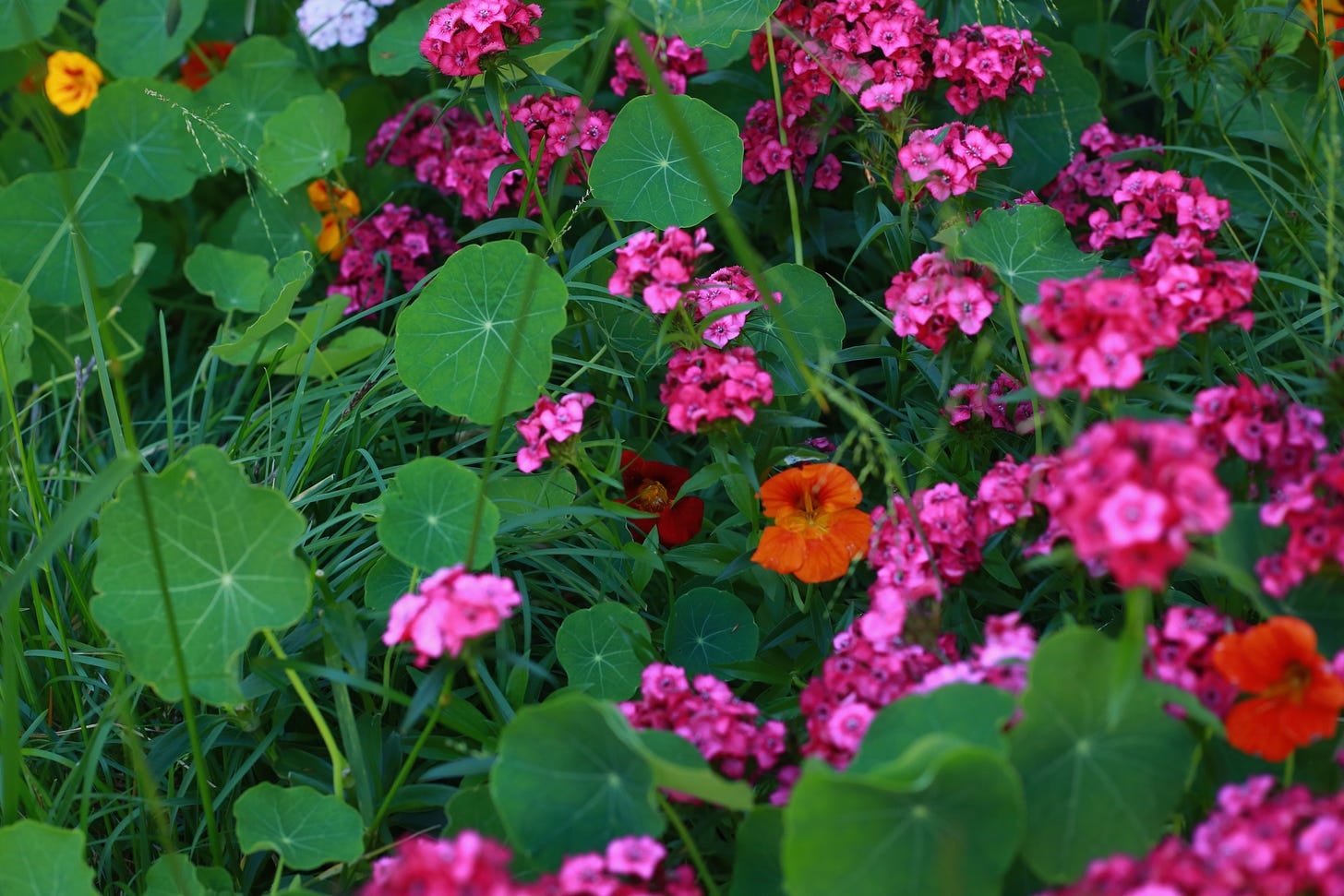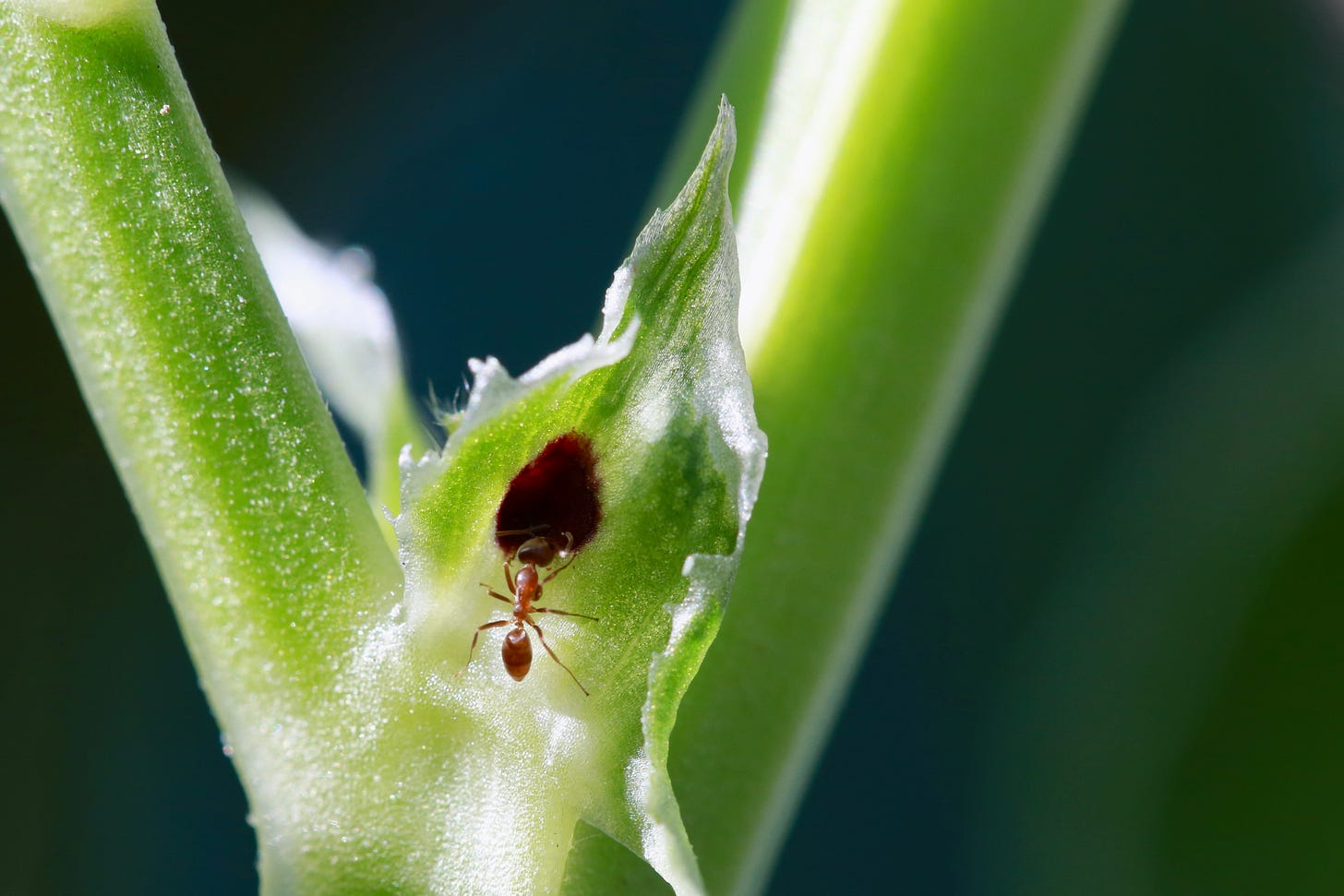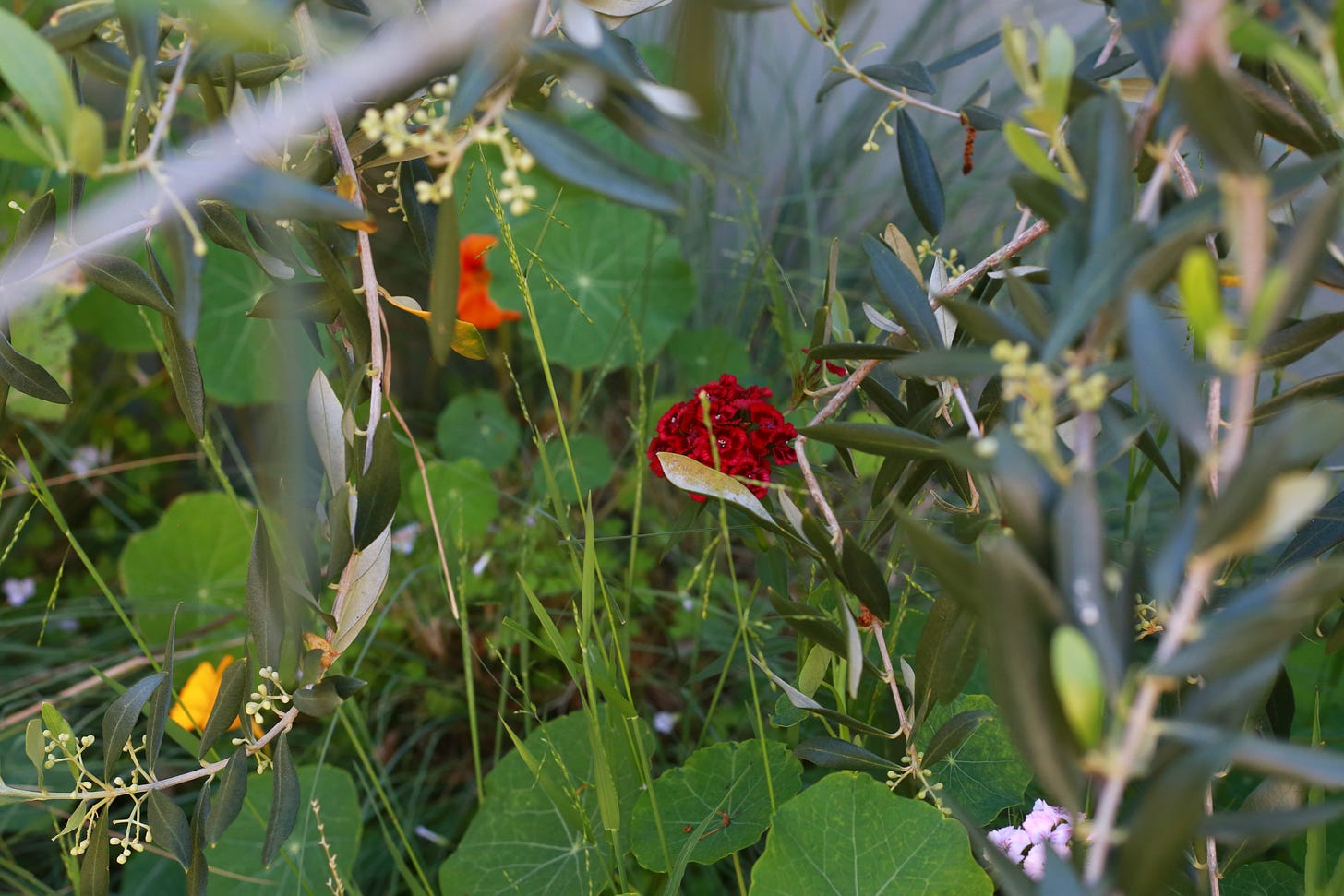For this Wednesday’s plant event at KQED, I got to make an Instagram Reel talking about the event from my own garden. As I panned over my yard and tried to find the good angles with my phone, I realized that my own gardening practice is messy. Nasturtiums climb haphazardly over ornamental grasses that I’ve kinda-sorta kept in shape. Sweet Williams compete with yarrow. It’s unruly, not very telegenic, and maybe inscrutable.
Curious about that May 8 event? Get your tickets! If you’re local, come to the station. If you’re not, there’s a livestream. You’ll leave with a plant (maybe even one of Alex Arzt’s feral cabbages!), and some new knowledge about flower parts and crop ancestors. This is not your average how-do-I-grow-better-tomatoes kind of gardening event. We’re asking the big questions of Conservatory of Flowers and UC Botanical Garden experts about plants and the humans who’ve tended them over the millennia.
I recently talked with garden designer Leslie Bennett and friends about her book Garden Wonderland. It’s gorgeous and Leslie’s gardens are amazing. There’s a whole checklist of things you can ask yourself about your space and solid rules for improving the depth and movement of your garden.
Buuuutttt…. What if you just want to watch plants be?
What if gardening can be just care and attention, not control? For me, it’s more interesting when the plants don’t do what I’ve intended. I just like to watch them up close. I’ve been bringing in long nasturtium vines, and letting them drape all over our sideboard. They bloom and bloom again. I like them at every stage from the aerodynamic, almost predatory bud to the collapsing, enriched stage of exhaustion. At this stage in my life, it’s the whole vine that’s the metaphor. I am bursting bud and spent blossom all together.
When I actually open my eyes to the unplanned action in my garden, I learn so much. An example. I have been meaning to take down the single fava bean plant that I grew from my Companion—Platform seed. But every time I went out there to do it, I’d find myself watching the ants crawling up its long stalks. I’d follow one for a while until it found its destination: nearly always a bit of pigment at the base of a branch the same color as the flowers’ inky component. I could watch them for 10-20 minutes at a go, never quite able to follow one long enough to see it complete a loop from wherever it came from to that spot of pigment and back. That spot is an “extrafloral nectary,” a bonus spot of sweetness, and ants love to feed on it.
Traditionally, people think of nectar as part of the flowering process: the old nectar-for-pollination exchange. So why produce nectar so far away from the reproductive parts? One theory holds that the presence of the ants keeps other bugs from eating the fava leaves. I’d never heard of that kind of symbiosis before, and there it was just waiting for me to discover it among the mess of my garden. I don’t want to romanticize the care relationship between the ants and the fava plant, but I do want to notice it.
Perhaps one day I will exhaust all the noticing I can do and then, maybe, I’ll need to spice things up with more precise planting. But every time I look around right now, I see a plant part I cannot name or a relationship I did not expect, a geometry that calms some part of my mind or just one color of one plant emerging from the noise.







Lovely post! It reminds me of the Isabella Steward Gardner quote, "My garden is Riotous, Unholy, Deliriously Glorious! I wish you were here." And, her devotion to nasturtiums was equal to yours! I didn't know about the ants and the fava bean nectary. I wonder what the coloration is all about? I didn't think ants could see color, but there's got to be something to that red. Hmmm....
I am teaching a zoology course, and I came upon some work on acacia-ant interactions that involved those sorts of extrafloral nectaries you mention! The scientists have found some very cool stuff about the sometimes mutualistic, sometimes antagonistic, sometimes ambivalent relationship between ants and plants! https://blog.myrmecologicalnews.org/2019/05/08/interview-with-veronika-mayer/